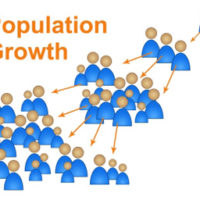NPG Paper Shows Impact of Refugees on U.S. Population
- NPG
- June 8, 2016
- Press Releases
- 0 Comments
NPG Paper Shows Impact of Refugees on U.S. Population
New analysis highlights the effect of current refugee policies on America’s population size and security.
Download a PDF of this release here.
Alexandria, VA (June 8, 2016) – On March 30th, the United Nations High Commissioner for Refugees Filippo Grandi attended a one-day, high-level conference on refugees from Syria – where U.N. Secretary Ban Ki-moon stated that all nations “can do more” to accept refugees. Echoing this sentiment, High Commissoner Grandi’s comments focused on “other pathways” to resettlement, specifically suggesting “extended family members, labour mobility schemes, student visas, scholarships, as well as visas for medical reasons” as avenues to admit more refugees. After attending the conference, the U.S. Department of State issued a Media Note vowing to increase “the total number of resettled refugees from around the world to 100,000 by the end of FY 2017 – an increase of over 40 percent since FY 2015….”
In response to these actions, Negative Population Growth (NPG) has released a new Forum paper today which outlines the historical effect of refugee admissions on the U.S. population. Titled The Impact of Refugees on the Size and Security of the U.S. Population, the new NPG paper analyzes immigration policy trends which have changed this once short-term humanitarian program into a private industry focused entirely on the quantity of refugees admitted – rather than on the quality of life they, and existing American citizens, will experience as a result. Author Edwin S. Rubenstein explains: “the lines are often blurred between humanitarian aid and financial gain when it comes to refugees – financial gain that only serves the charitable groups who lobby for more and more refugee admissions.”
Drawing on decades of experience as a financial analyst, Rubenstein highlights the glaring contradiction between the program’s original purpose and what it has become since the 1980 Refugee Act. He notes: “In 1980, [aid groups] became eligible for a State Department Reception and Placement Grant (RPG) to help defray the costs of resettling refugees… [But] ‘resettling’ does not mean what you think it does. The refugee NGOs do little more than sign the refugees up for public housing, welfare, and other social services provided by local communities in which they are placed. After one month their responsibility is over – and they move on to the next revenue-generating refugee.” This system means huge costs for the government – and American taxpayers. Rubenstein explains: “Unlike most legal immigrants, newly-arrived refugees are eligible for the full gamut of Federal safety net benefits.”
Echoing what has long been held by NPG, Rubenstein adds: “The combined inflow of refugees and asylees is currently running at about 95,000 per year. …However, the impact of refugees on American population growth is far greater than their numbers alone would suggest… The chain migration process – by which one generation of refugees can spawn future generations of legal immigrants – has been part of U.S. immigration policy since the 1965 Immigration Act.” The resulting numbers of immigrant arrivals can quickly skyrocket. Along with the population growth, the push for more Syrian refugees comes with huge national security implications. As Rubenstein explains: “The problem in screening refugees… is that it can’t be done. …‘This is because many Syrian government offices have been overrun in the chaos of war, leaving their trove of blank documents – passports, national identity cards, drivers’ licenses, etc. – behind….’” This creates a huge problem for U.S. officials trying to target fraudulent documents, “when false identities are inserted into legitimate forms.”
NPG President Don Mann had strong praise for the new work, stating: “Rubenstein expertly highlights the serious implications of our present refugee program – and demonstrates how those pressures are impacting our nation’s population. The policy of ‘we must admit more refugees,’ which has been pushed upon us for decades by NGOs which stand to benefit financially, clearly does not serve the best interests of the refugees themselves – let alone the best interests of American citizens.” Mann added: “Immigration will soon be the primary driver of U.S. population growth, and our everyday crises are growing as a result. If we do not act now, America’s future will certainly pay a dangerous price.”
Rubenstein concludes: “Aside from the well-being of the refugees themselves, the U.S. cannot ignore that we are ultimately responsible for the best interests of our nation’s future. We must consider the toll… With current chain migration policies allowing each refugee to ultimately add multiple new immigrants to the U.S. population, the drain on local, state, and federal resources will only compound exponentially. …In all, the push for ever-more refugees has become a ‘feel-good activity’ – but one that unfortunately will end up harming more people than it helps.”


